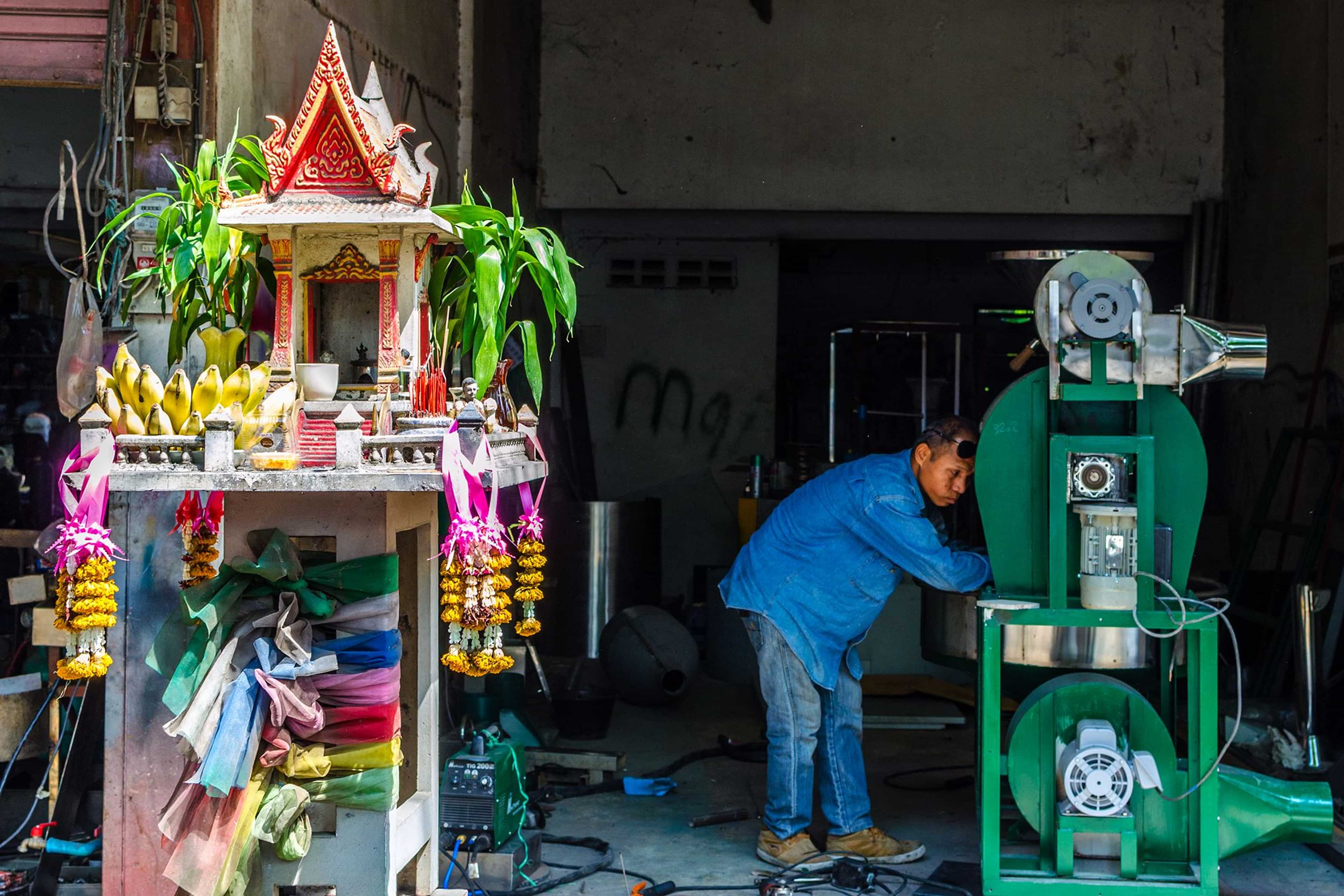
Travel
All you need to know about Thai spirit houses
Destinations
Joanna Horanin
Hi, I'm Joanna, the author of The Blond Travels. In the worlds of Thailand and Portugal, I feel like a fish in water - and it's no coincidence! I've been exploring Thailand for over a decade, and I've settled in Portugal for 6 years now. My mission is to support Dreamers - just like you - in discovering these fascinating countries and helping those in love with them find their own place on Earth, preferably for good! Let's uncover these unique corners of the world together.
Thailand is a country, where Buddhist philosophy blends with mysticism and superstitions. Faithful gather in golden temples to pray to Buddha statutes and offer money and food to different gods to get rid of misfortunes and attract good luck.
Thais are very superstitious and they strongly believe in ghosts and mystic energy, which is everywhere and which can make your life miserable and sad, or rich and happy. One of the manifestations of such beliefs are phi houses, tiny, little buildings in which spirits live (phi in Thai means “ghost or “spirit”). You can see them everywhere in Thailand and they often baffle and fascinate visitors. Every building, a shop and an old tree has its own house. A phi house, also known as a spirit house, looks like a colourful toy. It’s always decorated with flowers and surrounded with bowls of fruit and glasses, filled with red liquid.
Every tourist guide mentions spirit houses. Most of the time this concept is explained in a simple way – these houses are built for spirits, so they don’t bother the inhabitants of the land. It is a good explanation, although quite a simplified one. It turns out that behind these beautiful, little buildings there is a bit more to discover.

Are you looking for a local guide? Are you after an interesting tour?
TakeMeTour connects local guides with tourists and creates unique tours in South East Asia.
Spend a day with your private guide, find out more about the country and make new friends.
Book your tour with TakeMeTour.Kinds of phi houses and their inhabitants
Nowadays, the spirit houses are produced in factories and sold in special shops. They are all made out of concrete and metal. In the olden days they were made of wood and until now, in small villages, you can see beautiful, wooden, handmade phi houses. The look and the size of a phi house are dictated by the wealth of its owner. Government institutions and shopping malls have huge phi houses, while poor families can only afford very modest ones. The colour of a phi house is decided during a reading of an astrological chart, which is performed by a monk, or a fortune teller.
These tiny houses always stand on concrete pillars. If you look closely you will notice that some of them have one pillar, some have 4. Those standing on 4 legs are meant for the spirit of the land, a ghost that lives on that particular ground and which can bring misfortune, or good luck to the people, who live in the nearby building.
Houses standing on one leg are set a little higher. Inside you will find two figurines: an old lady and an old man. They are personifications of the owner’s ancestors. Next to them, there is another phi house, where an angel can be found. This one is called Saan Pha Phum and its origins come from the Hindu religion. The angel holds money and a sword and his task is to protect the owners of the land and bring them luck and fortune.
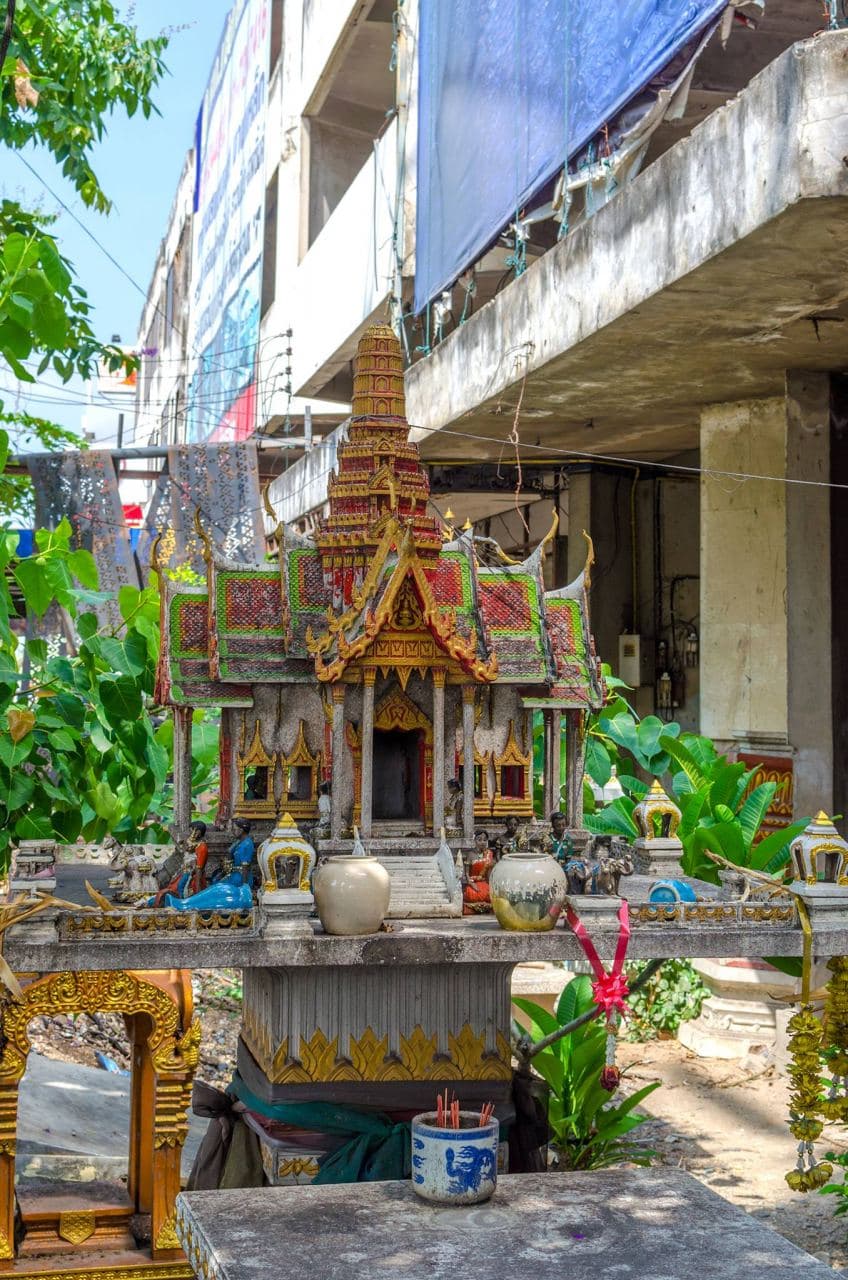
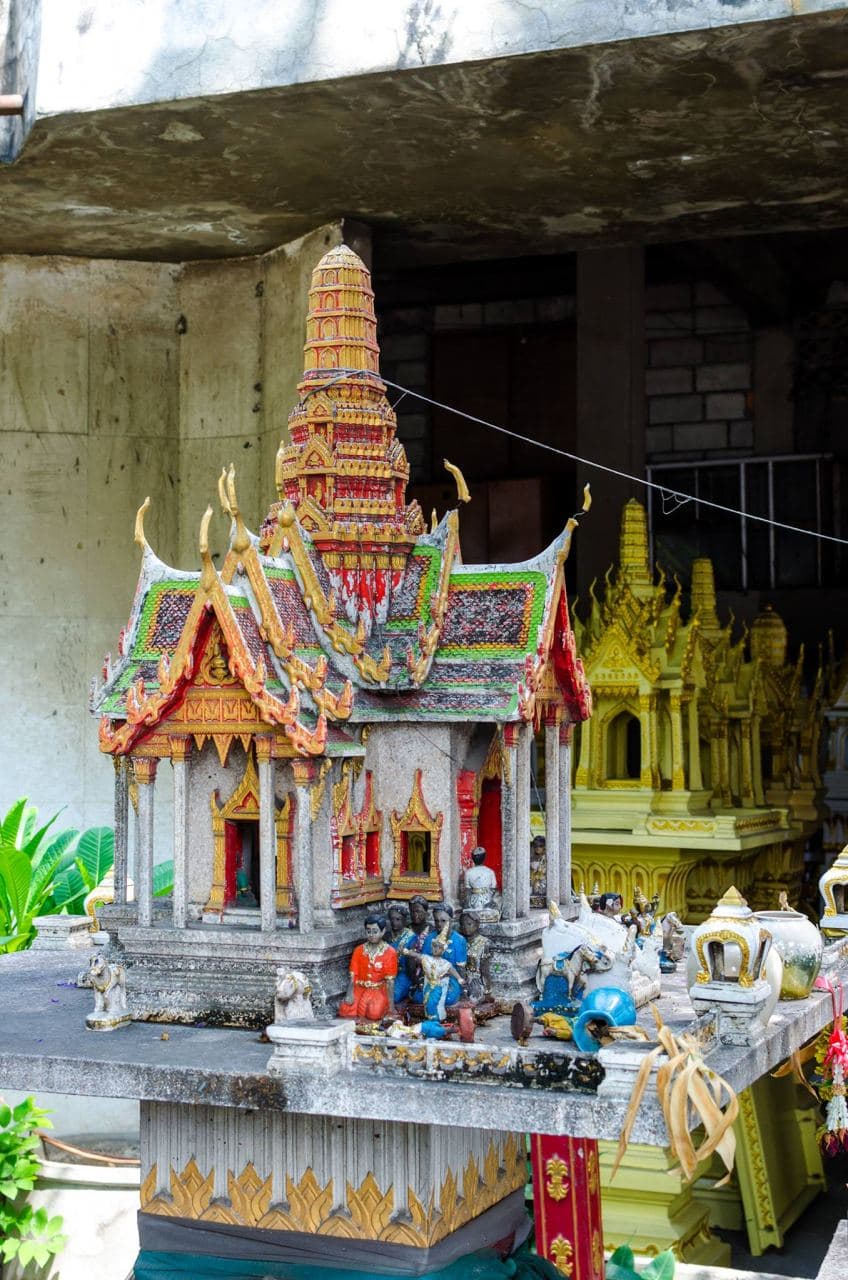
Setting up a phi house is not easy and is always performed during a Buddhist ceremony. First, a 2-meter hole needs to be dug out. To make sure that the spirits are happy, the owners put coins, amulets and colourful stones in the bottom of it. Incense is burnt and an invited monk prays and blesses the place, where a new phi house will stand.
If for any reason, a phi house needs to be removed, a special ceremony is called. The house is then moved to a temple, or to a special cemetery, where it stays until it rots away.
Animal sacrifice and strawberry Fanta
If you’ve ever been in Thailand then you must be wondering why people offer fruits and red liquids to the ghosts. The latter is nothing else but strawberry Fanta. It might seem weird, but the red colour symbolises blood and it replaces animal sacrifice, which was once performed very often. Blood in Thai culture means life. Thanks to it we live and we die. So, it is believed that blood can also bring good fortune and fertile the land. That’s why in Thailand people used live animals as gifts to gods. This tradition was made illegal by King Rama I and from then on people tried a few different things to replace blood until they finally discovered strawberry Fanta. Nowadays, during bigger ceremonies, animals are not killed, but one of the most important sacrifices is a pig’s head, which is then consumed during a party after the ceremony is completed.
Fruits and vegetables are offerings to ghosts and spirits to say thanks for bringing good luck, or to ask them for keeping the household safe. These gifts are presented every morning. Incense is then lit, they are supposed to get rid of bad energy. After a whole day, fruits are given to the homeless, animals, or they are thrown away. Drinks and liquids are always poured away.
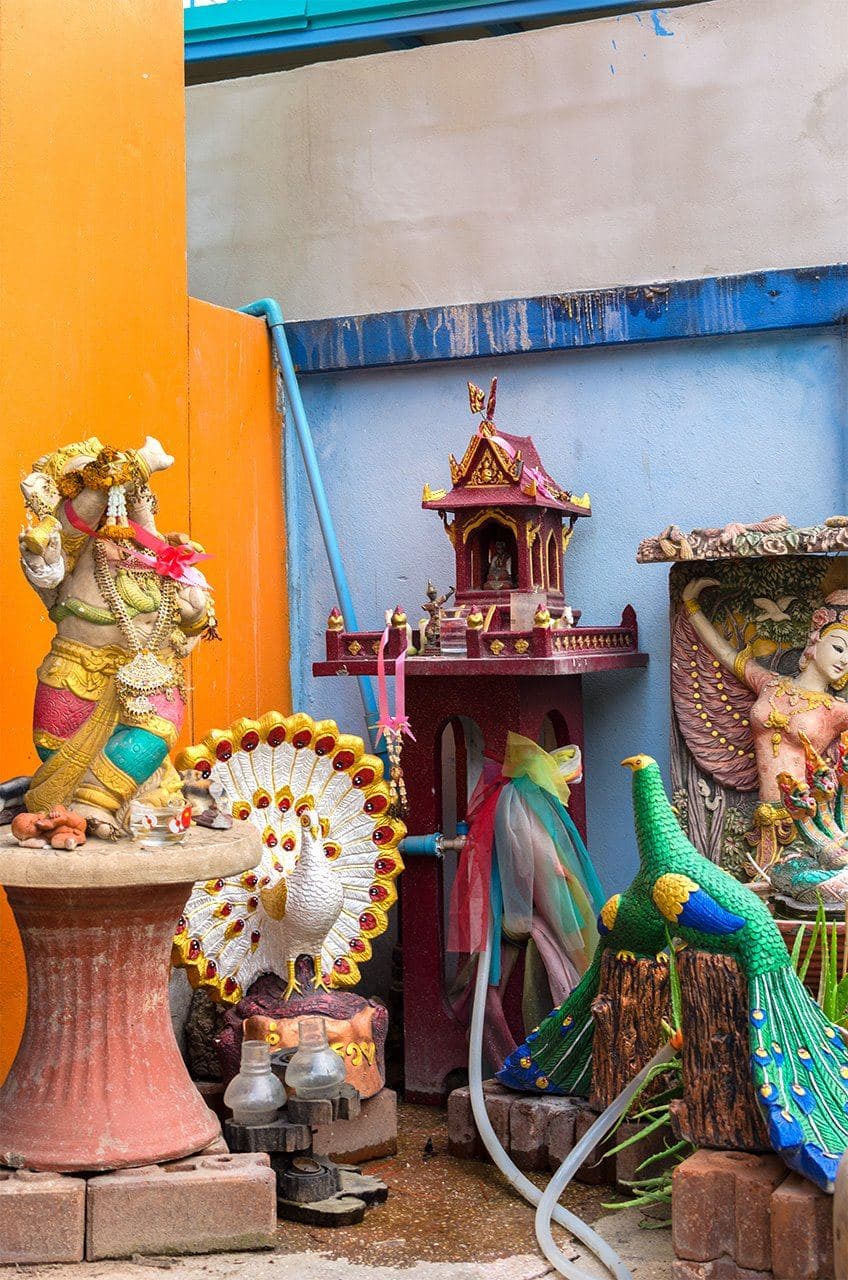
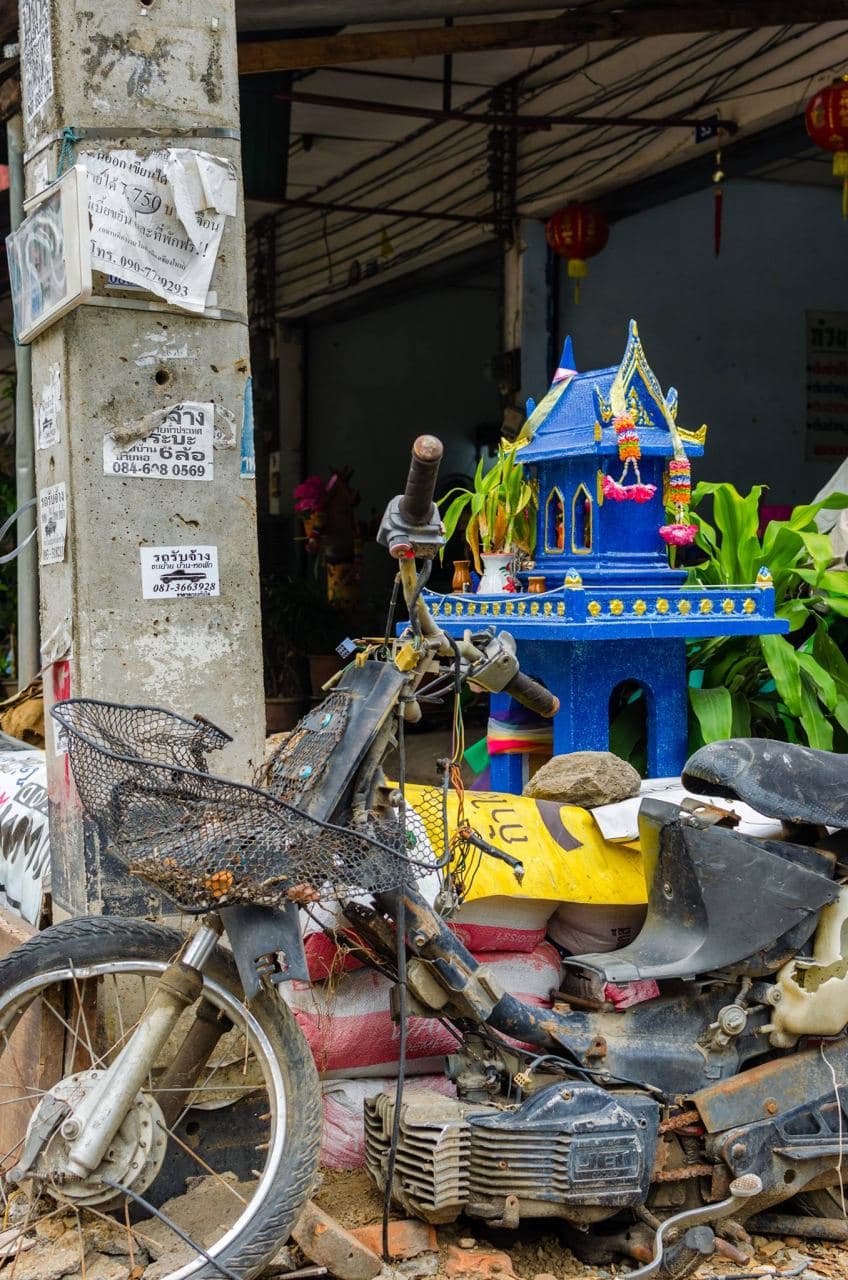
Phi houses – ceremonies and superstitions
Every phi house is looked after and always has fresh flowers, fruits and drinks that are put around it. In offices and apartments, guards take care of the houses and they say the morning prayers, but everyone that lives, or works, in the building nearby can take part in the ceremonies.
There are also other traditions that are connected to the houses. For example, if you’ve just moved to a new apartment, a good practice is to visit the Phi house, burn 9 incense and say prayers to ask for good fortune and good luck.
When you stay overnight at someone’s house, you should also say a prayer to the spirits and ask them for a blessing and for good dreams. It is also a symbol of saying hello to the ghosts that live on the land and assure them that you’re only a guest.
Phi houses are one of many manifestations of how important religion and superstitions are in Thai culture and how they all blend in together. These small structures are a part of the local landscape, which makes Thailand so colourful and fascinating. If you are going to the Land of Smiles, have a look around and see how different and varied phi houses are. Observe the local customs, notice beautiful decorations and what kind of offerings are set around phi houses. It will allow you to get to know Thailand a little bit better.